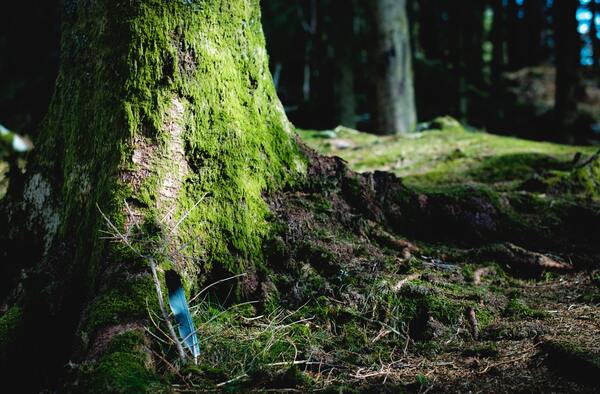One of the more divisive renewable energy sources is biomass. It emits pollution into the atmosphere even though it is thought of as carbon-neutral. How can the use of biomass energy improve the quality of the water? By lowering water pollution, the use of biomass energy can raise the quality of the water. This article can help you understand how biomass energy use improves water quality.
How Biomass Can Improve Water Quality
Organic material serves as the fuel source for biomass energy. Wood, starchy food crops, animal waste, and human or animal waste products are all examples of what is meant by this. Even garden waste can be used to create biogas in an anaerobic digester.
The kind of biomass that is used determines whether or not biomass energy can enhance water quality. Water quality can be raised by using tree crops like willow, switchgrass, and poplar.
Contrarily, conventional food crops like corn and wheat can have a negative impact on the quality of the water.
By Reducing Harmful Farming Activities
The notion that biomass energy can improve water quality in agriculture presumes the substitution of bioenergy wood crops for conventional food crops. This lessens the potential harm that some food crops, like corn and wheat, may cause to nearby waterways.
The use of environmentally destructive farming methods can be reduced by substituting wood crops for food crops. The following are some benefits that wood crops have over food crops:
- Reduced Fertilizer Usage
Food plants (like corn and wheat) need a lot of nutrients to grow. Farmers as a result apply nitrogen- and phosphorus-rich fertilizer to their land. This has the potential to contaminate nearby watercourses over time.
Tree crops, however, can thrive in less fertile soil and therefore don’t need as much fertilizer. Examples of these crops include willow, switchgrass, and poplar.

- Reduced Soil Erosion
Agricultural practices are impacted in numerous ways by the problem of soil erosion. The issue is made worse when it comes to food crops for bioenergy. In order to remove row crop residue before each year’s replanting, such crops frequently need to be cultivated.
This might cause soil to separate, move, and deposit in waterways. On the other hand, perennial wood crops, like willow, can grow back repeatedly before needing to be replanted. Soil erosion is consequently lessened.
It should be noted that many farmers are environmentally conscious and take measures to minimize the impact of their operations on nearby waterways. Additionally, they contribute to the sustainability of their company by taking care of their land.
By Reducing Sewage
While most nations treat their sewage to get rid of bad bacteria and pollution, some don’t. This may wind up being dumped into lakes, rivers, or even the ocean. We decrease the possibility of sewage seeping into our water by using animal and human waste products to produce biogas.
How Biomass Might Reduce Water Quality
Now let’s examine the various ways biomass energy can actually worsen water quality.
Through Fertilizers And Soil Erosion
Some biomass crops can actually degrade the quality of water, as we have already mentioned. Fertilizer usage and soil erosion in agriculture are the main topics of discussion.
The “Dead Zone” is a cyclical event that occurs in the Gulf of Mexico just off the coasts of Texas and Louisiana. Due to the lack of oxygen in the area, the ocean experiences an annual bloom of algae that eventually decomposes.
Biomass Energy Emissions
Some biomass energy sources use wood as their fuel source. Wood burns, releasing a number of gases into the atmosphere. It’s possible that you’re mistaken in believing that these emissions can’t have an impact on the quality of the water.
The United States Environmental Protection Agency (EPA) states that research indicates that ecosystems may be impacted by air pollution. According to them, the following outcomes could result:
- excessive levels of acid in streams and lakes.
- Surface water is being covered in nitrogen.
- contamination of surface water with mercury.
All of the aforementioned factors have the potential to both worsen water quality and have an impact on fish and other aquatic life. Additionally, when mercury is consumed by plants and animals, it can move up the food chain and eventually be consumed by humans.
Biofuel Production And Improving Water Quality
Nitrogen
Potential feedstocks have different nitrogen needs, and nitrate leaching rises as nitrogen application rates rise. The recommended nitrogen levels for corn are typically twice as high as those for switchgrass.
Based on tissue tests, the recommended nitrogen levels for hybrid poplar are typically lower than those for switchgrass or corn. Different plant combinations might only need a small amount of nitrogen.
Phosphorus And Sediment
Based on the findings of soil tests, phosphorus application rates are determined. Generally speaking, crops respond to rising soil phosphorus concentrations up to a certain point, after which time further phosphorus additions have little impact on yield but can have an impact on the quality of water leaving the field.
Controlling soil erosion and the delivery of nutrients from sediment to surface water is essential because phosphorus is primarily transported by soil sediment.
In comparison to biomass production from perennial crops like switchgrass or poplar, biomass production from annual row crop residue will probably result in more sediment movement and phosphorus delivery to surface water.
